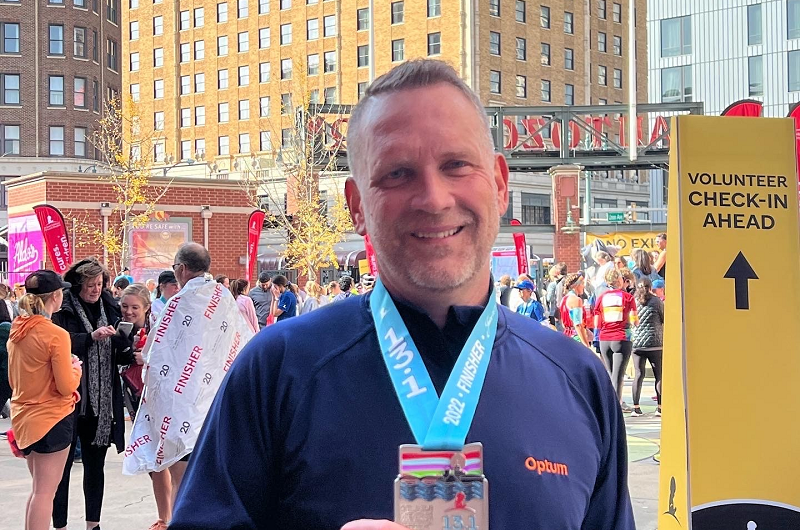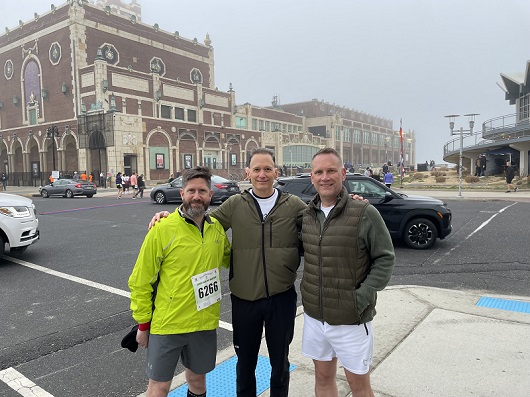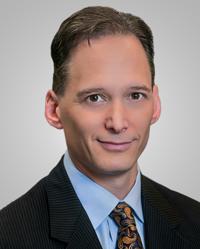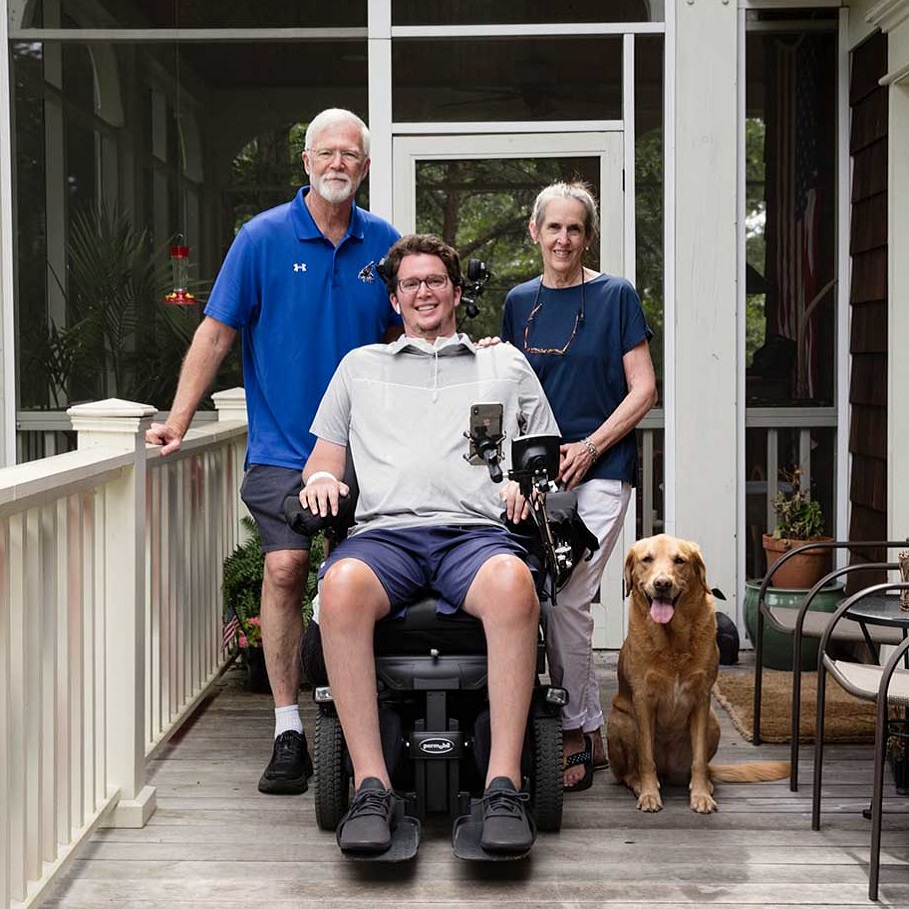Marathoner Back to the Races After Diaphragm Injury

April 11, 2023
At age 52, Gerald Branim was a dedicated runner and a model of health when a serious bout of COVID-19 damaged his lungs so badly that he was tethered to an oxygen tank for a year.
But even as he slowly recovered, the Tennessee man’s dreams of hitting the pavement again seemed hopelessly out of reach. Medical testing revealed Gerald’s diaphragm wasn’t working properly—a long-term offshoot of the virus—and his doctors couldn’t offer treatment that would do more than allow a sedentary lifestyle. For the goal-oriented marathoner who had competed in more than 15 endurance events over the prior dozen years, this verdict was devastating.
“Having led an active life with three sons, I thought, ‘This can’t be my new norm,’” Gerald recalls. “At that point, I needed a handicapped parking tag because I got out of breath walking into the store. It was quite alarming and very bleak to think I’d never run again.”
Searching the Web for a Surgeon
Gerald’s desperation led him to scour the internet for an alternative path to restore his lung function. Stunningly, he found an article about a distance runner just like himself whose paralyzed diaphragm had been successfully treated the year before at Jersey Shore University Medical Center. The groundbreaking surgery had been pioneered and performed by plastic and reconstructive surgeon Matthew Kaufman, M.D., co-director of the Center for Treatment of Paralysis and Reconstructive Nerve Surgery at Jersey Shore.

Known as phrenic nerve reconstruction, the three-hour operation involves decompressing the existing phrenic nerve to remove scar tissue and borrowing a nerve from the patient’s calf to bypass the damaged phrenic nerve—responsible for diaphragm function—under the collarbone. Meanwhile, the calf nerve is replaced with another from a cadaver. Dr. Kaufman has performed nearly 700 such surgeries at Jersey Shore since 2016, attracting patients from across the United States and the globe.

“None of my doctors in Tennessee had ever heard of Dr. Kaufman’s surgery, so I know I’d never have this option if I hadn’t found him,” explains Gerald, now 54 and a grandfather of five. “It gave me immense hope. I realized this was a unique surgery and Dr. Kaufman is a unique surgeon, and I couldn’t go anywhere else.”
Gerald is among a subset of patients Dr. Kaufman has encountered since the pandemic whose phrenic nerve appears to have been drastically damaged by COVID-19. This damage more typically results after surgery on the neck or chest, from trauma or among laborers who routinely work with their arms over their heads. Some patients develop this condition without an obvious cause. Often told by doctors that the problem is permanent, about half of Dr. Kaufman’s patients, like Gerald, find him through a web search. “That’s why patients seek us out from far and wide for this procedure,” Dr. Kaufman says.
Blasting Through Goals
Gerald and his wife drove from Tennessee to New Jersey for his complication-free surgery in May 2022. He told Dr. Kaufman that he’d like to run a half-marathon within 12 months of the procedure, an ambitious goal given that full recovery generally takes one to two years. But six weeks later, Gerald was able to run five miles and blew past his original goal within six months.

“Immediately after surgery, I just felt so positive and so sure I would be able to run again,” he says. To celebrate, Gerald got two tattoos on his forearms, one saying, “Pain is temporary” and the other, “Quitting is forever.” “This had been my mantra for running, and now it has taken on new meaning. I knew I’d do it.”
As part of his comeback, Gerald teamed with Dr. Kaufman and fellow former patient Adam Wernow—whom he now counts as a friend—in running the Asbury Park Half Marathon. “Now my goal is to complete five half marathons, a 10K and a full marathon before the one-year anniversary of my surgery,” Gerald reports. “Go big or go home.”

This fierce determination, Dr. Kaufman says, has been pivotal to Gerald’s swift recovery. “Patients like Gerald are the ones who do best because of their motivation,” he says. “It speaks to how a good-quality surgical procedure can be enhanced by a patient’s drive to want to get better.”

Next Steps & Resources:
- Meet our source: Matthew Kaufman, M.D.
- Learn more about the Center for Treatment of Paralysis and Reconstructive Nerve Surgery at Jersey Shore
The material provided through HealthU is intended to be used as general information only and should not replace the advice of your physician. Always consult your physician for individual care.






